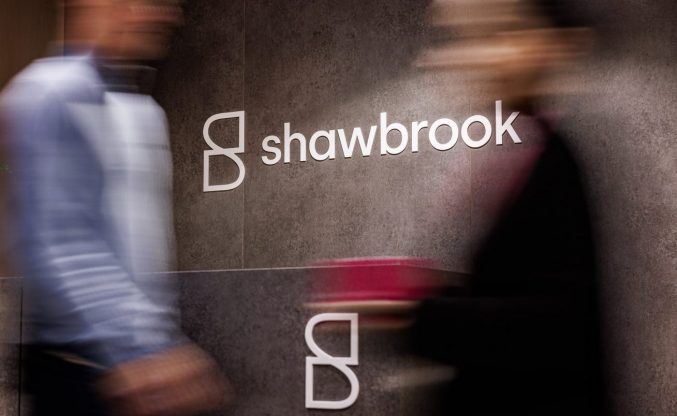Bridging sector records solid growth in Q2 2017
By Bridging Loan Directory

The UK’s bridging sector continued its solid growth trajectory in the second quarter of 2017, according to findings from West One’s Bridging Index. The latest edition of the quarterly report is the third consecutive edition to show growth in the market, revealing that gross annualized lending increased to £4.3bn in June – a substantial 4.2% increase from June 2016’s figures, and approaching 2016’s pre-EU Referendum high of £4.4bn.
The findings from this iteration of the Bridging Index provide further evidence that the bridging sector has recovered from the pronounced slump in the Q3 of 2016 that followed in the wake of the Referendum result. The latest figures from the Association of Short Term Lenders (ASTL) bear this out, showing that gross lending from all its members rose to £875m in June – an increase of nearly £100m from £780m in Q1.
Stephen Wasserman, Managing Director of West One, said:
“After a substantial dip in the market’s performance in the immediate aftermath of the Referendum, it’s obviously very encouraging that the bridging sector is seeing its third consecutive quarter of annualised growth. With this period including the significant political and economic volatility of Article 50 being issued, a snap General Election that delivered a hung Parliament and then the formal initiation of Brexit negotiations, the continued recovery only serves to underpin the resilience of the bridging market.
At West One, we’ve seen a steady rise in demand for our bridging over the course of the last 9 months, and suspect this is due to more and more property professionals turning to alternative forms of finance, as a result of political uncertainty affecting appetite from conventional lenders. The drop in business in the wider market which followed in the aftermath of the Leave vote last June appears to have been only a blip, and has since been followed by a return to sustained growth. We expect that the bridging market will continue to this pattern of solid growth, in spite of an apparent slowdown in the housing market, as it takes up further slack in funding for property projects.”
Trends in the bridging market
The size of the typical bridging loan has grown significantly over recent years, as property professionals have increasingly incorporated bridging into their project financing arrangements. Over the last 24 months this has continued, with average loans trending to around £900,000. However, the average loan size did dip slightly in Q2 to £880,000 vs. £1.2m in Q1, as fluctuations in individual months fell as low as £600,000.
Although it remains too soon to identify a longer-run trend to smaller loans, the first half of 2017 did see fewer large transactions coming to market. The market for high-end properties with values over £1m, particularly in central London, has been sluggish. With London property values continuing to drop compared with the rest of the country – in July, RICS reported that 45% of chartered surveyors in the capital said they observed a fall in prices in the past three months – many investors will be waiting to see how this market develops, before committing to development work there.
That suggests that larger transactions associated with this sector may well continue to be dampened. We may also see a higher volume of smaller loans continuing in the coming months, especially if investors turn to smaller deals or deals in other regions, to make the returns they seek.
Bridging the gap to development finance
An estimated 85% of bridging finance now goes to property professionals – investors, landlords and small developers – indicating that bridging lenders are providing over £3.5bn of funding a year for significant property projects.
This figure compares well with De Montfort University’s estimate of the total market for development finance lending – £7.7bn in 2016, according to their Commercial Property Lending Report. From these figures, this suggests that bridging is providing property professionals with half as much funding again as conventional development finance.
This can be explained by the uptake of bridging by small property businesses. As discussed above, the vast majority of market growth has come from uptake by property professionals, reflected in average loan sizes growing from £250-300,000 in 2011 to £800-1,200,000 today.
Research by Knight Frank in their latest 2016 / 17 residential developer survey, showed that the 62% of respondents were seeking minimum development funding in the £1m-£10m range, with a further 16% wanting to finance smaller projects up to £1m. 35% of respondents funding needs are to a maximum of £25m.
But sentiment amongst those development finance lenders interviewed by De Montfort showed that only 20% were willing to lend on projects under £10m. That strongly suggests that a significant proportion of residential development projects will be underserved by conventional development financing.
As the average bridging loan size indicates, bridging lenders are typically operating in precisely this underserved zone up to £10m, with some larger projects funded as well. This shows how bridging is adapting to complement development finance for SME property businesses. The previous Government’s February 2017 white paper, Fixing our Broken Housing Market, noted the creation of a Home Building Fund to provide “£1bn of short-term loan finance targeted at SMEs, custom-builders and innovators”, precisely to support SME developers to bring them back to the home-building market. That indicates there is more slack in small project funding that bridging can continue to capture.
Given that housing supply is in a chronic shortage and that small developers are still active, it is likely that there is plenty of scope for bridging to continue to take advantage of the opportunities that remain, even if the slower pace of the overall property market means there are fewer opportunities in total.
Wider property market analysis
The strong performance of the bridging sector stands at odds with the wider property market, which has endured a much more turbulent Q2. House sales have been decreasing or flat-lining according to the latest RICS Residential Market Survey, which reported that June saw the average supply of stock hit a new record low with a lower numbers of agreed sales. Demand also slipped further, with new instructions falling for the 16th month in a row.
Similarly, HMRC reported that property transactions fell between May and June by 3.3%, reaching a 9 month low in June – albeit followed by a small 1.3% bounce-back in July. House prices didn’t fare much better, with June decreasing by 1% – the largest monthly fall since January.
When compared to other areas in the property market, this strong performance of the bridging sector suggests that more borrowers and investors are now looking towards alternative financing. This is borne out from the findings in the Bridging Index, with many investors who stepped out of the market immediately after the EU Referendum result now starting to return.
Bridging interest rates

Interest rates finished Q1 at 1.04%, having seen after steady falls throughout the second half of 2016. They fell further in Q2 2017, with April at 1.03%, 1.02% in May, before falling below the 1.00% line in June, with a record low of 0.96%.
Strong competition in the sector has created excellent value for customers, as rates have remained below 1.2% for more than two years. This historically low-rate environment means we anticipate borrowers will continue to look at alternative financing options in the future. This could prove a crucial advantage to well-funded players in the market, who are able to satisfy customers with special circumstances who either need flexible loans or need funding with a quick turnaround.
Danny Waters, pictured, CEO of Enra Group, said:
“Although we have seen a period of strong growth in the bridging sector, there are still challenges ahead. The Brexit negotiations will likely cast a shadow over the property market for the foreseeable future, and with inflation continuing to be a problem, it is possible that we could see an interest rate increase in the coming months. Whatever happens next, the industry needs to be ready with diverse and flexible financing options for property purchasers. The bridging sector has seen a 5-fold growth in lending since 2011 and is well placed to take advantage of economic fluctuations, being able to adapt to changing needs as and when they emerge.”










You must be logged in to post a comment.